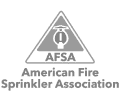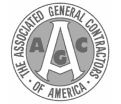Warehouse Fire Safety Tips
If you operate a large or small warehouse in the Houston, Texas area, you know how important it is to be compliant with all fire codes. Not only does meeting all required fire code standards increase the safety of your warehouse, but it can also help you avoid serious fines from the fire marshal. Of course, following the minimum standard of the fire codes will only get you the minimum amount of fire protection—if you want to be truly protected, there is a great deal more you need to do!
Kauffman Co. is a leading fire protection company in the Houston area. To schedule service or speak with one of our technicians that specializes in warehouse fire safety, call us today at (713) 893-1090.
Warehouse Fire Safety
Meeting the Minimum Fire Safety Codes
Fire safety codes can vary wildly from jurisdiction to jurisdiction, and even from county to county. Ultimately, the local fire chief has the final authority in determining the fire code. That said, there are a few standards that you can usually count on to be true when dealing with warehouse fire safety:
Warehouse Fire Sprinkler Systems
Like in all buildings, having a working fire sprinkler system installed in your warehouse is the single most important fire protection measure you can take. Many warehouses use deluge style automatic fire sprinklers, as they deliver the highest quantity of water at the fastest speed and are highly effective at fighting fires that occur with closely packed plastic, wood, paper, and cardboard.
- Make sure you don’t store anything higher than 18 inches below your sprinkler heads. Anything higher than this will block the flow of water and compromise the protection provided by the fire sprinkler.
- If you store racked pallets in your warehouse, make sure you maintain at least three inches of “transverse flue space”—that is, the space on either side of the racked pallets. You will also need to maintain six inches of longitudinal flue space, or space between rows of back-to-back rack. Note: flue space is measured by the space between the loads, not between the pallets. This means that if you have a load that extends three inches off the side of the pallet, you’ll need to start measuring the flue space from there, not the end of the pallet.
- If your warehouse meets the above requirements for flue space, you will probably not need to have an in-rack fire sprinkler system installed. However, if you use solid decking in your racks, you use storage configurations that prevent maintaining flue spaces, you store high hazard materials, or your storage reaches more than 40ft in height, in-rack fire sprinkler systems are advised.
Storage, Stocking & Employee Safety
In addition to a fire sprinkler system, there are codes for how storage is set up and stored in your warehouse.
- If you have any aisles in your warehouse that dead end, they must not be more than 50-ft in length. Any longer and they must provide an exit—you wouldn’t want anyone to get trapped at the end of a 100-ft corridor!
- In solid piled floor storage, you must have an aisle at least every 100-ft and, if the storage is up against a wall, within 50-ft of said wall. Basically, this means that every portion of solid piled floor storage must be within 50-ft of an aisle.
- If you manually restock your warehouse, such as using stock cards, rolling ladders, etc., make sure you always have an unobstructed aisle space equal to 24 inches or half the aisle width—whichever is greater.
- During mechanical restocking, you’ll need to maintain an unobstructed aisle of at least 44 inches.
Flammable Material Storage
Warehouses that store flammable liquids (such as aerosols, vegetable oil, ethanol, etc.) have more required fire codes to follow.
- Obviously, smoking should be prohibited in all warehouses. Make sure you post “No Smoking” signs throughout the facility where people can see them easily.
- Liquid propane fuel cylinders for use on LP forklifts must be stored at least 20-ft away from fire exits and are limited to 300-lbs per storage facility (that works out to six 43-lb cylinders or nine 33-lb cylinders). For this classification, consider empty cylinders full. If you need to store more than this, make sure the storage locations are at least 300-ft apart.
- Check your local fire codes for guidelines pertaining to:
- Automated material handling operations such as carousels and ASRS units
- Battery charging areas
- Plastics
- Aerosols
- Hazardous Materials
Beyond Codes & Compliance
Obviously, the above recommendations will protect you from fire marshal fines. However, even following those guidelines is not a guarantee that your warehouse will be fully protected in the event of a fire. There are many, many things that can affect your warehouse’s actual level of fire protection, and most of these things are things that could be easily missed by the fire code inspector, including changes in the types of products stored, changes in the types of packaging used, or changes in the storage configuration.
If you want go beyond simply “meeting the fire code guidelines” and provide your employees with serious fire protection, you should talk with a fire protection engineer who can design a fire protection plan that is custom tailored to fit your warehouse’s needs.
To make sure your building is fully protected against fires, follow these additional warehouse fire safety tips:
- Have an evacuation plan – Every building needs an evacuation plan. A fire protection company will help you determine the easiest routes of access to all the exits in your building and will assist you in running fire drills so your employees know exactly what to do in the event of a fire. Also, since warehouse configurations change fairly frequently as storage configurations change, make sure your employees know that going to an “assigned” exit is less important than calmly and efficiently going to the nearest exit possible.
- Train your employees to use fire extinguishers – working in a warehouse, you will probably have Class ABC or Class D fire extinguishers. Make sure everyone in your building knows how to access your fire extinguishers and how to use them quickly. This is the safest way to prevent a small fire from spreading rapidly. Kauffman Co. makes this easy by providing Houston area fire extinguisher training!
- Designate floor storage and staging areas – use tape to designate specific storage and staging areas. This will make it much easier to determine and enforce proper aisle space rules.
- Keep an eye on trash accumulation – this is not something you need a fire protection company to help you with, but it’s still extremely important. Obviously, a space that is cluttered with trash is going to be at a higher risk for fire than one that is kept neat. Make sure you provide adequate trash cans and assign the task of emptying them as they fill up. In addition, you should have designated areas for storing unused pallets, crates, etc. As a general rule, you should stack unused pallets no more than six feet in height.
In order for your warehouse to be fully protected against fires, you need to go beyond the minimum standards set by the fire code. The above recommendations for your warehouse are just that, recommendations. The best way to ensure that your property, equipment, and, most importantly, employees are safe in the event of a warehouse fire is to work with a licensed and insured fire protection company like Kauffman Co.
Houston Area Fire Protection Company for Warehouses
If you own a warehouse in the Houston, Texas area and either need a fire protection system inspection or want to find out how to maximize your existing level of fire protection with more warehouse fire safety tips, call Kauffman Co. today!
















